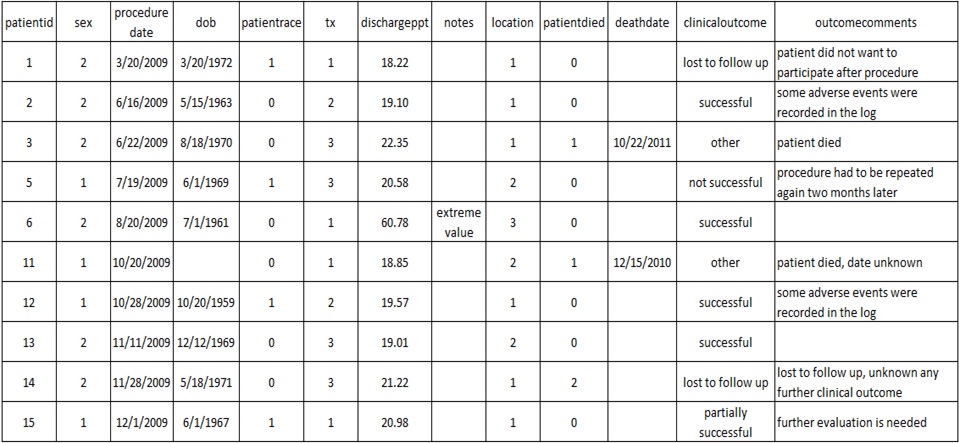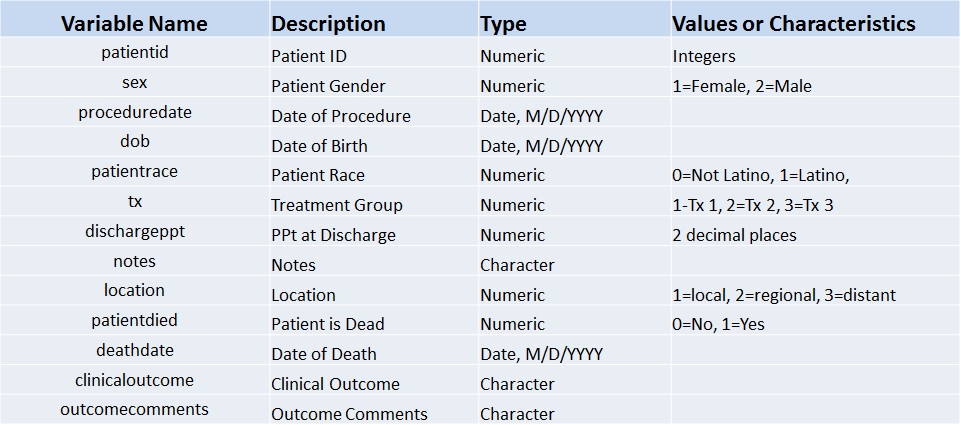Codebook (Data Dictionary)
When creating a database, it is important to create a codebook that identifies and explains the data. Below you will find database example #2 and its codebook.
Database Example #2

Codebook

When creating your own codebook, please consider some of these basic tips.
Variables
- Shouldn't start with a number
- Should be one word
- The more meaningful, the easier to remember
- Length can be as long as necessary (but preferably shorter)
Descriptions
- Complete description of the variable
- Can be the actual question posed in the questionnaire
Type
- Specify the type of variable (numeric, character, etc.)
Values or Characteristics
- If it is ordinal (such as a Likert scale, 1=always, 2=sometimes, 3=never)
- If nominal (such as ethnicity), specify what each number represents
- If numerical, list how many decimal places
- If applicable, list the minimum and maximum



